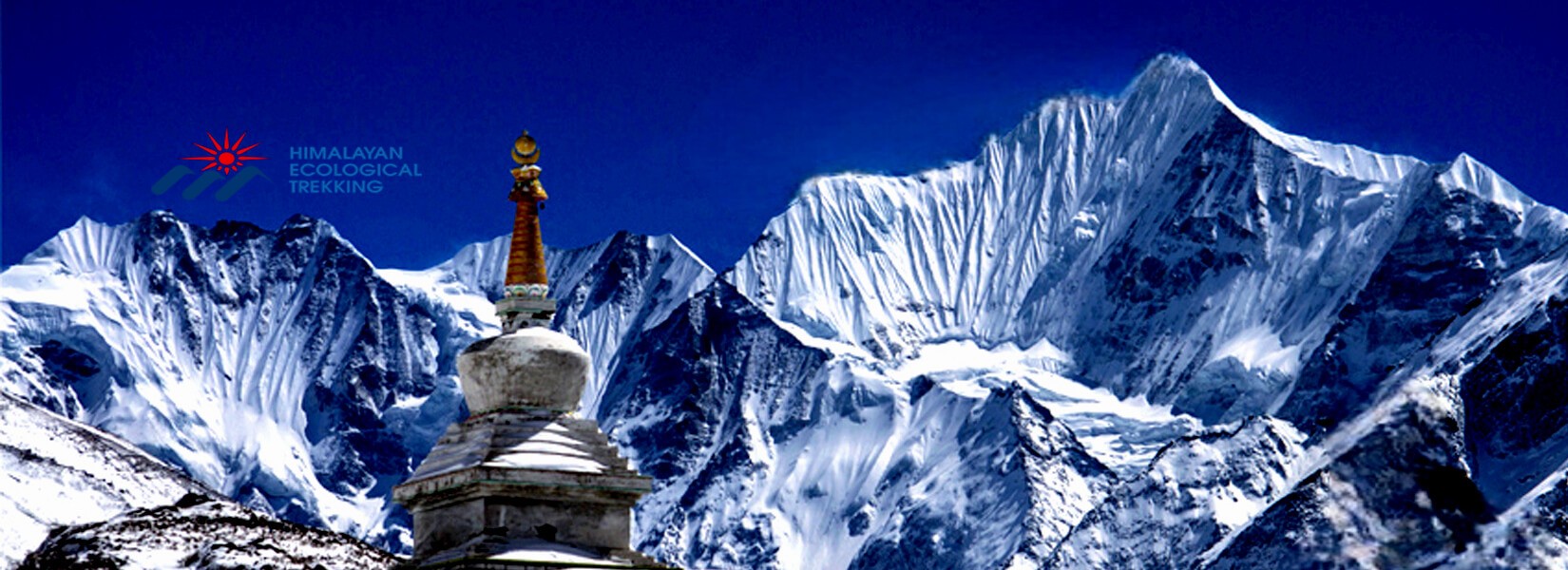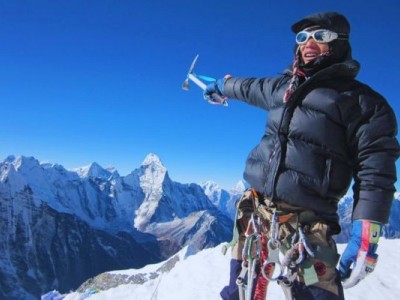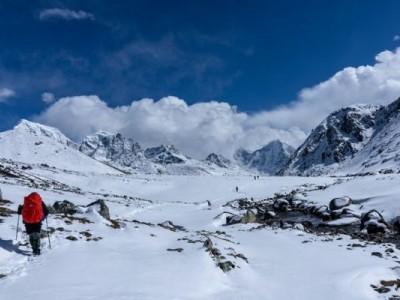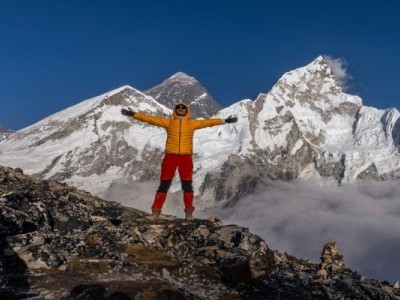Are you dreaming of trekking through the breathtaking Langtang region of Nepal, but worried about the Langtang Trek Cost? you’re not alone! Many adventure seekers hesitate at the threshold of this incredible journey, unsure if their wallet can handle the strain.
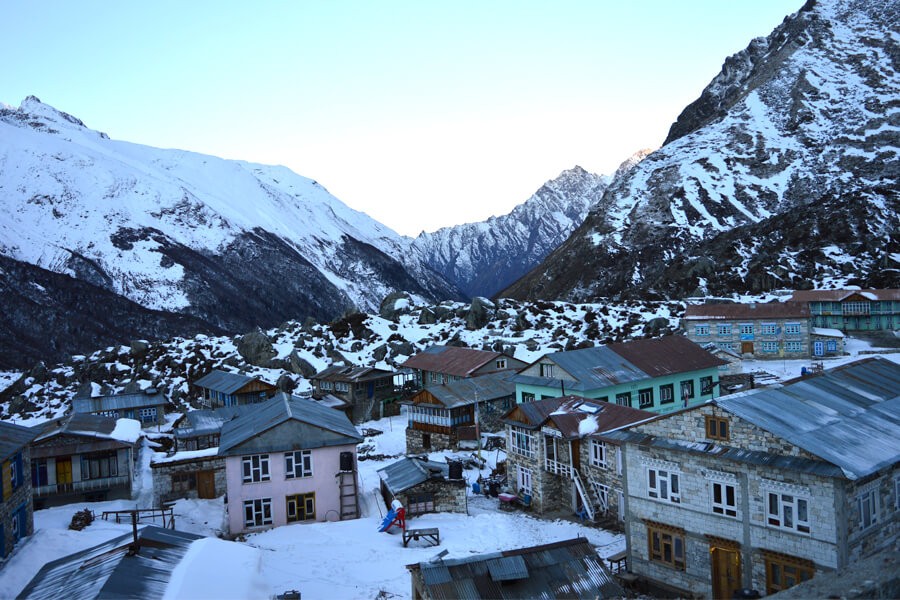
But fear not, Himalayan Ecological Trekking Company! Understanding the true cost of the Langtang trek is the first step towards making your Himalayan dreams a reality. From transportation and accommodation to permits and porters, we'll break down every expense you'll encounter on this unforgettable journey. By the end of this guide, you'll not only have a clear picture of the Langtang trek costs but also discover some savvy tips to keep your budget in check without compromising on the experience.
Let's dive into the nitty-gritty of expenses, starting with transportation costs and working our way through every aspect of this incredible adventure!
Understanding Langtang Trek Expenses
A. Basic cost breakdown
The Langtang Trek costs can be broken down into several key categories:
- Transportation
- Accommodation
- Food and drinks
- Permits and entry fees
- Guide and Porter services
- Equipment and gear
- Miscellaneous expenses
B. Factors influencing overall expenses
Several factors can significantly impact your Langtang Trek budget:
- Trekking season
- Duration of the trek
- Accommodation choices
- Dining preferences
- Guide and Porter hiring decisions
- Personal spending habits
| Factor | Low-cost Option | High-cost Option |
| Season | Off-peak (winter) | Peak (spring/autumn) |
| Accommodation | Basic teahouses | Luxury lodges |
| Food | Local dal bhat | Western cuisine |
| Guide | Self-guided | Experienced guide |
C. Average total cost range
The average cost for the Langtang Trek can vary widely depending on the factors mentioned above. However, a general range can be estimated:
- Budget trek: $500 - $700 per person
- Mid-range trek: $700 - $1000 per person
- Luxury trek: $1000+ per person
These estimates typically cover a 7-10 day trek and include most essential expenses. However, it's important to note that personal choices and unforeseen circumstances can affect the final cost.
With this understanding of the basic expenses and influencing factors, let's delve into the specific costs associated with transportation for the Langtang Trek.
Transportation Costs
A. Getting to Syabrubesi (trek starting point)
The journey to Syabrubesi, the starting point of the Langtang Trek, is an adventure in itself. Most trekkers begin their journey from Kathmandu, with two primary options available:
- Public Bus:
- More affordable option
- Takes approximately 7-8 hours
- Departs from Machhapokhari Bus Station in Kathmandu
- Cost: Around 600-800 NPR (5-6 USD)
- Private Jeep/Car:
- A more comfortable and faster option
- Takes about 5-6 hours
- Can be arranged through trekking agencies or hotels
- Cost: Approximately 17,000-20,000 NPR (128-150 USD) for the entire vehicle
| Transportation Method | Duration | Cost (approx.) | Comfort Level |
| Public Bus | 7-8 hours | 5-6 USD | Basic |
| Private Jeep/Car | 5-6 hours | 128-150 USD | High |
B. Return transportation options
After completing the trek, you have similar options for returning to Kathmandu:
- Public bus from Syabrubesi to Kathmandu
- Private jeep
- Some trekkers opt to combine their return journey with a visit to nearby attractions like the Gosaikunda Lakes, which may affect transportation choices and costs
C. Local transportation during the trek
Once you're on the trail, local transportation is minimal:
- The Langtang Trek is primarily done on foot
- In some areas, you might encounter local jeeps for short distances, but these are not commonly used by trekkers
- Emergency evacuation services are available (at additional cost) if needed, typically via helicopter
Now that we've covered the transportation costs associated with the Langtang Trek, let's explore the accommodation expenses you can expect during your journey.
Accommodation Expenses
When planning your Langtang Trek, understanding the accommodation options and their associated costs is crucial. Let's explore the various aspects of lodging during your journey.
Tea House Prices
Tea houses are the most popular accommodation choice for trekkers in the Langtang region. These basic lodges offer a comfortable place to rest and replenish your energy. Here's a breakdown of typical tea house prices:
| Room Type | Price Range (NPR) | Price Range (USD) |
| Basic Room | 500-700 NPR | $4-$5.50 |
| Room with Attached Bathroom | 800-1300 NPR | $6.10-$10 |
Note that prices may vary depending on the location and altitude of the tea house.
Camping Alternatives
If you're looking for a more adventurous and economical choice, camping is an option along the Langtang Trek. Consider the following:
- Make sure to bring your tent and camping equipment.
- Pay a small fee (100-200 NPR) to use designated campsites
- Save on accommodation costs but factor in the weight of carrying camping equipment
Seasonal Price Variations
Accommodation rates in the Langtang region can vary depending on the time of year:
- Peak seasons (Spring: March-May, Autumn: September-November): Expect higher prices and potential scarcity of rooms
- Off-peak seasons (Winter: December-February, Summer/Monsoon: June-August): Lower prices and more availability, but challenging weather conditions
When budgeting for your Langtang Trek, factor in these accommodation expenses and consider your preferred style of lodging. Next, we'll explore the costs associated with food and drinks during your trek, which are equally important for planning your overall budget.
Food and Drink Costs
As we delve into the expenses associated with the Langtang Trek, it's crucial to consider the costs of food and drink, which can significantly impact your overall budget.
Meal Prices in Tea Houses
Tea houses along the Langtang Trek offer a variety of meals at different price points. Here's an overview of what you can anticipate:
| Meal Type | Average Price Range (NPR) |
| Breakfast | 800 - 1200 |
| Lunch | 700 - 1000 |
| Dinner | 700 - 1000 |
Prices tend to increase as you ascend to higher altitudes due to the difficulty in transporting supplies.
Water and Snack Expenses
- Bottled water typically costs between 100 and 200 NPR per liter. (Higher prices increase at higher altitudes)
- Boiled water: 50-100 NPR per litre (more environmentally friendly option)
- Snacks (e.g., chocolate bars, nuts): 150-300 NPR per item
To save money and reduce plastic waste, consider using water purification tablets or a filtration system.
Dietary Options and Their Impact on Cost
Your dietary choices can affect your food expenses:
- Vegetarian meals are generally cheaper and more readily available
- Western dishes often cost more than local Nepali cuisine
- Special dietary requirements (e.g., gluten-free, vegan) may incur additional charges
To manage costs effectively:
- Opt for local dishes when possible
- Bring some of your own snacks and energy bars
Next, we'll explore the essential permits and entry fees required for the Langtang Trek, which are crucial components of your overall budget.
Permits and Entry Fees
When planning your Langtang Trek, it's crucial to factor in the necessary permits and entry fees. These costs are mandatory and contribute to the conservation of the area and the safety of trekkers.
Langtang National Park Entry Fee
To enter Langtang National Park, you'll need to purchase an entry permit. The fees are as follows:
| Nationality | Fee (NPR) | Fee (USD) |
| Foreign | 3,000 | 25 |
| SAARC | 1,500 | 12 |
| Nepali | 100 | 1 |
This permit is valid for a single entry and can be obtained at the park entrance or in Kathmandu.
TIMS Card Cost
Another important permit is the Trekkers' Information Management System (TIMS) card. The prices are:
- Alltrekkers: NPR 2,000 (~17 USD)
TIMS cards are available through the trekking company.
Other Necessary Permits
For the Langtang Trek, you typically don't need additional permits beyond the National Park entry fee and TIMS card. However, if you plan to extend your trek to nearby areas or climb peaks, additional permits may be required:
- Gosaikunda Area Permit: NPR 3,000 (~25 USD) for foreigners
- Helambu Area Permit: NPR 2,000 (~17 USD) for foreigners
Be sure to include these expenses in your total budget. While they may seem like small expenses, they can add up, especially for budget-conscious trekkers. With these permits secured, you'll be ready to explore the stunning landscapes of the Langtang region legally and responsibly.
Guide and Porter Expenses
When planning your Langtang Trek, considering guide and porter expenses is crucial for both budget and safety reasons. Let's break down the costs and benefits associated with hiring these professionals.
A. Guide hiring costs
Hiring a guide for your Langtang Trek typically costs between $20 to $30 per day. This rate can vary depending on the guide's experience and the trekking season. Here's a breakdown of guide costs:
| Experience Level | Cost per Day (USD) |
| Beginner | $20 - $25 |
| Experienced | $25 - $30 |
| Expert | $30 - $35 |
B. Porter fees
Porters charge less than guides, usually around $18 to $20 per day. They can transport up to 20-25 kg of your gear, making your trek more comfortable.
C. Tipping expectations
Tipping is customary and appreciated in Nepal. Consider the following tipping guidelines:
- Guides: $5 - $8 per day
- Porters: $4 - $6 per day
Remember to adjust your tip based on the quality of service and the length of your trek.
D. Benefits of hiring local guides
Hiring local guides offers several advantages:
- In-depth knowledge of the area
- Language assistance
- Cultural insights
- Safety and navigation expertise
- Support for the local economy
While hiring guides and porters adds to your overall trek cost, their expertise and assistance can greatly enhance your Langtang Trek experience. With this information on guide and porter costs, you can plan your budget more effectively. Next, we'll explore the costs associated with equipment and gear for your trek.
Equipment and Gear Costs
When planning your Langtang Trek, equipment and gear costs are crucial. Proper gear ensures your comfort and safety throughout the journey. Let's explore the essential trekking gear, rental options, and the pros and cons of purchasing versus renting.
A. Essential trekking gear
A successful Langtang Trek requires the following essential gear:
- Sturdy hiking boots
- Warm sleeping bag
- Waterproof jacket and pants
- Layered clothing (base layers, fleece, down jacket)
- Backpack or daypack
- Trekking poles
- Headlamp
- Water bottles or hydration system
B. Rental options and prices
Many trekkers rent gear in Kathmandu to save on costs and luggage space. Here's a comparison of common rental items and their average daily prices:
| Items | Average Daily Rental Price (NPR) |
| Sleeping bag | 150-250 |
| Down jacket | 150-250 |
| Trekking poles | 100-150 |
| Backpack | 100-200 |
C. Purchasing vs. renting gear
Consider these factors when deciding whether to purchase or rent gear:
- Duration of trek: Longer treks may justify purchasing gear
- Future use: Invest in gear if you plan to trek frequently
- Quality concerns: Purchased gear ensures personal preferences and fit
- Budget constraints: Renting can be more economical for one-time trekkers
- Luggage limitations: Renting reduces the need to transport bulky items
Ultimately, a combination of purchased and rented gear often provides the best balance between cost-effectiveness and quality. With your gear sorted, let's move on to additional expenses you should consider for your Langtang Trek.
